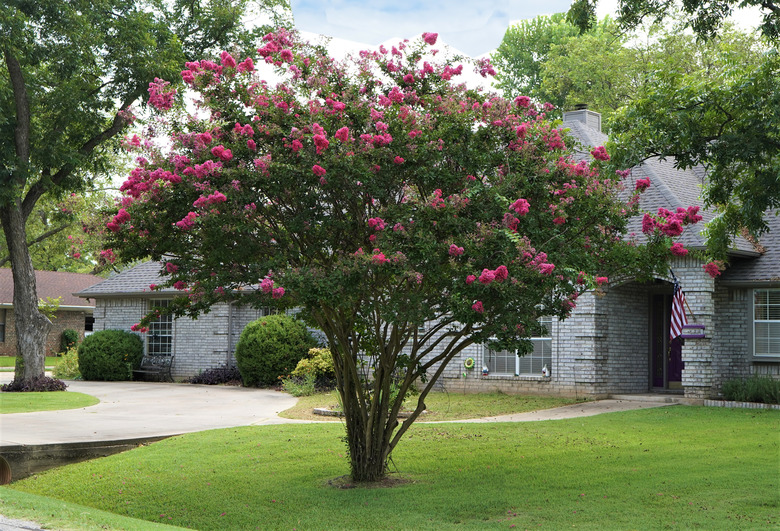How Much Water For A Crape Myrtle?
We may receive a commission on purchases made from links.
Crape myrtles (Lagerstroemia spp.) bloom profusely in summer in the southern United States despite baking temperatures and dry soil. Extremely heat and drought tolerant, they are popular, easy-care plants in both shrub and tree forms in U.S. Department of Agriculture plant hardiness zones 6 through 9.
Crape myrtles should never be planted in wet, soggy soils and need little water. They do appreciate regular irrigation, however, in the period after planting.
Crape Myrtle Watering Needs
Crape Myrtle Watering Needs
Crape myrtles need irrigation really in two circumstances. The first is immediately after transplant. It is critical to maintain an evenly moist soil for the first two months or so after transplanting the tree into the landscape. Some experts recommend continuing to provide water for the first one or two years.
The second circumstance is during periods of excessive drought. Once a newly planted crape myrtle develops and establishes a good root system after transplanting, it survives perfectly well on natural rainfall alone. Deep irrigation is only required in periods of seasonal drought. Lower leaves may show signs of withering or yellowing.
How Much Water?
How Much Water?
Crape myrtles are not all the same, nor are their planting locations identical. The amount of water needed depends on the size of the crape myrtle and the type of soil. A general rule in applying enough water in periods of drought is to thoroughly moisten the soil around the root ball every week.
In newly planted trees, the root zone includes the original root ball and an area several feet outward in all directions from the trunk. Larger, established trees extend their roots well beyond the reach of the branch tips. Sandy soils drain faster and may need more water to moisten the soil thoroughly, while clay and loamy soils hold more water.
Watering Issues for Crape Myrtle
Watering Issues for Crape Myrtle
Crape myrtle trees need the most moisture in the soil profile when they are actively growing — when the plant displays leaves. Once the leaves naturally drop away in fall, they don't require irrigation when dormant unless they're newly planted or the soil becomes unusually dry in winter.
You may water these trees at any time of the year as long as the soil is not frozen. Use a soaker hose to prevent water from getting on the foliage. Overwatering crape myrtles in spring and summer can diminish flowering, since overly moist soil promotes leafy growth, not flower production.
Mulching Crape Myrtle
Mulching Crape Myrtle
One easy way to assist your crape myrtle with its water needs is to layer several inches of organic mulch over the root zone. Mulch provides numerous benefits. Since it covers the soil, it helps conserve soil moisture, diminishing the need to water the tree.
Often, natural rainfall maintains an appropriate soil moisture level for all established trees, and the mulch layer keeps the soil barely moist — perfect for crape myrtles. The mulch also reduces evaporation of water during hot weather and slows the rate of soil drying during seasonal droughts.
